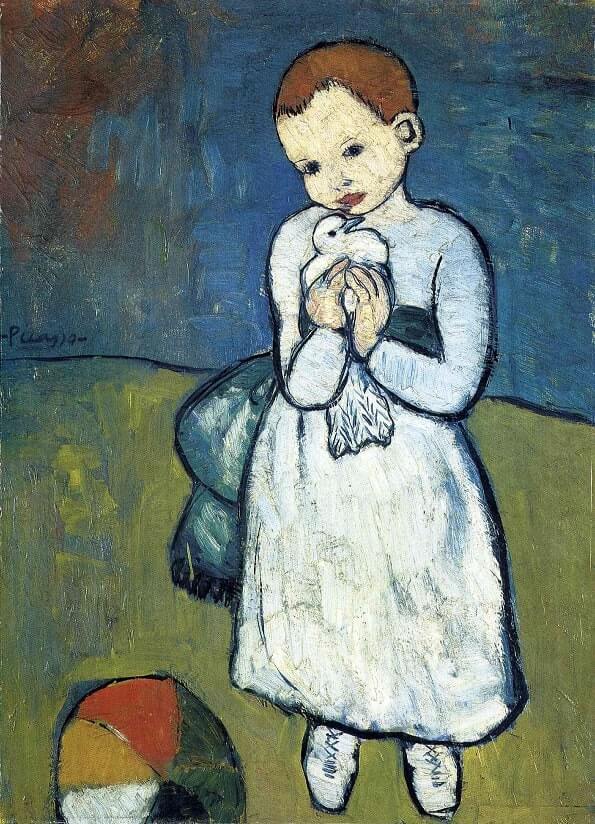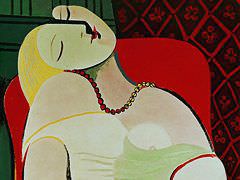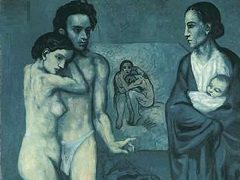Child with a Dove, 1901 by Pablo Picasso

Child with a Dove is one of Picasso's earliest works: he was twenty-one, or even less, but his own style is already apparent. He probably painted it in Paris during his second visit, when he was staying with Spanish friends. By that time he had seen, studied, and assimilated contemporary French painting: he had taken Toulouse-Lautrec's way of rendering a visual impression rapidly with a few forceful lines and shrill spots of color, and made it his own. Also, he had learned from Degas how to observe a figure sharply and with detachment. In Child with a Dove, we see a new thoughtfulness, a poetic sympathy with the subject, qualities that were to dominate his work in the years that followed.
The masters who served as Picasso's mentors in the early years of his career - Toulouse-Lautrec and Degas- had observed and set down the figures they painted with cool objectivity. Picasso had followed their example in his earliest works; but here, a new relationship is introduced between the figure observed and the observer: a relationship of empathy, of human sympathy. And in this early work we find a feature of Picasso's painting that was to characterize his subsequent work: the painter is deeply involved, wholeheartedly caught up in the object represented.
Possibly the reason for so intimate an approach to the subject lies in the subject of this particular work. Picasso's father, Don Jose Ruiz, had made pigeons a particularly favored subject of his paintings, and as a boy Picasso must often have seen pigeons, as well as his father's pictures of them. Childhood memories must surely have been involved.
The pictorial technique, however, is quite new, and it too is interesting for all that was to happen later. The forms are rendered in simple sweeping lines, and the colors are keyed to an untroubled three-tone scale in which greenish tones dominate. The shimmering Impressionist palette which Picasso had brought to Paris, and which he had used up to now, is here discarded. The colors are subdued, controlled by an austere swoop of line.
This painting comes well before Picasso's Blue Period - and it is perhaps the earliest of his works in which he appears as a clearly defined individuality. He seems to have left his apprenticeship behind, giving us for the first time an expression of his own, not very gay vision of the world. It was a vision he shared with others of his generation at the turn of the century, to whom the world they saw around them seemed a paradise lost.
















